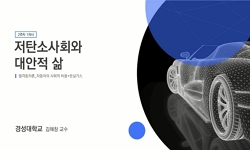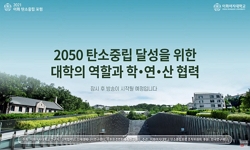본 연구에서 한국형 중이온 가속기 RAON에서의 의생물 실험을 위하여 요구되는 빔 조건을 만족할 수 있도록 Monte Carlo 전산모사를 통한 노즐 설계를 최적화하고자 하였다. 의생명 실험을 위한 ...
http://chineseinput.net/에서 pinyin(병음)방식으로 중국어를 변환할 수 있습니다.
변환된 중국어를 복사하여 사용하시면 됩니다.
- 中文 을 입력하시려면 zhongwen을 입력하시고 space를누르시면됩니다.
- 北京 을 입력하시려면 beijing을 입력하시고 space를 누르시면 됩니다.
https://www.riss.kr/link?id=A100841588
-
저자
배재범 (서울아산병원 방사선종양학과) ; 조병철 (서울아산병원 방사선종양학과) ; 곽정원 (서울아산병원(울산대부설)) ; 박우윤 (충북대학교) ; 임영경 (국립암센터 양성자치료센터) ; 정현태 (서울대병원 신경학교실) ; Bae, Jae-Beom ; Cho, Byung-Cheol ; Kwak, Jung-Won ; Park, Woo-Yoon ; Lim, Young-Kyung ; Chung, Hyun-Tai
- 발행기관
- 학술지명
- 권호사항
-
발행연도
2015
-
작성언어
English
- 주제어
-
등재정보
KCI등재
-
자료형태
학술저널
- 발행기관 URL
-
수록면
12-17(6쪽)
-
KCI 피인용횟수
0
- DOI식별코드
- 제공처
-
0
상세조회 -
0
다운로드
부가정보
국문 초록 (Abstract)
본 연구에서 한국형 중이온 가속기 RAON에서의 의생물 실험을 위하여 요구되는 빔 조건을 만족할 수 있도록 Monte Carlo 전산모사를 통한 노즐 설계를 최적화하고자 하였다. 의생명 실험을 위한 빔 조건으로 최대 조사면 크기, 선량균일도 그리고 빔 오염도의 특정 조건을 만족하는 $C^{12}$ 빔 생산이 요구되었다. 이때 최적화된 빔 노즐 설계를 위하여 Monte Carlo 시뮬레이션인 GEANT4 toolkit이 사용되었다. $15{\times}15cm^2$ 이상의 빔 조사면 크기와 3% 이내의 선량 균일도 그리고 전체 선량의 5% 보다 낮은 빔 오염도를 기본적인 조건으로 설정 되었다. 조사면 크기는 쌍극자 자석에 의해서 빔의 각도를 기울여 원형으로 회전하면서 쌍극자 자석의 아래쪽에 위치한 산란판의 두께를 조정하여 최적화 하였다. 빔 스캐닝 각도와 산란판의 두께는 Monte Carlo 시뮬레이션 분석에 의해서 각각 $0.5^{\circ}$와 0.05 cm로 최적의 값을 나타내었다. 선량 균일도와 최대 조사면 크기를 만족하기 위하여 static과 scanning beam을 복합하는 기술을 이용한 새로운 빔 전달 방법을 소개하였다. 중앙 고정용 빔과 빔 축으로부터 $0.5^{\circ}$ 경사각을 가지고 회전하는 빔과 경사각이 없이 바로 들어오는 빔을 조합하여 선량균일도가 1.1%와 빔 조사면의 최대크기가 $15{\times}15cm^2$가 되는 것을 확인하였다. 빔 오염도는 $C^{12}$ 이온과 다른 입자들에 의해서 전달된 흡수선량의 비율로 나타내었다. 물등가 깊이(water equivalent depth) 5 cm에서 17 cm 사이에서의 빔 오염도는 전체 선량에서의 2.5% 미만임을 확인하였으며 이와 같은 결과를 바탕으로, 본 연구에서는 의생명 실험을 위하여 요구되는 빔 조건을 만족하는 노즐 구조를 설정할 수 있었다.
다국어 초록 (Multilingual Abstract)
The purpose of the Monte Carlo simulation study was to provide the optimized nozzle design to satisfy the beam conditions for biomedical researches in the Korean heavy-ion accelerator, RAON. The nozzle design was required to produce $C^{12}$ beam sati...
The purpose of the Monte Carlo simulation study was to provide the optimized nozzle design to satisfy the beam conditions for biomedical researches in the Korean heavy-ion accelerator, RAON. The nozzle design was required to produce $C^{12}$ beam satisfying the three conditions; the maximum field size, the dose uniformity and the beam contamination. We employed the GEANT4 toolkit in Monte Carlo simulation to optimize the nozzle design. The beams for biomedical researches were required that the maximum field size should be more than $15{\times}15cm^2$, the dose uniformity was to be less than 3% and the level of beam contamination due to the scattered radiation from collimation systems was less than 5% of total dose. For the field size, we optimized the tilting angle of the circularly rotating beam controlled by a pair of dipole magnets at the most upstream of the user beam line unit and the thickness of the scatter plate located downstream of the dipole magnets. The values of beam scanning angle and the thickness of the scatter plate could be successfully optimized to be $0.5^{\circ}$ and 0.05 cm via this Monte Carlo simulation analysis. For the dose uniformity and the beam contamination, we introduced the new beam configuration technique by the combination of scanning and static beams. With the combination of a central static beam and a circularly rotating beam with the tilting angle of $0.5^{\circ}$ to beam axis, the dose uniformity could be established to be 1.1% in $15{\times}15cm^2$ sized maximum field. For the beam contamination, it was determined by the ratio of the absorbed doses delivered by $C^{12}$ ion and other particles. The level of the beam contamination could be achieved to be less than 2.5% of total dose in the region from 5 cm to 17 cm water equivalent depth in the combined beam configuration. Based on the results, we could establish the optimized nozzle design satisfying the beam conditions which were required for biomedical researches.
참고문헌 (Reference)
1 Kwon YK, "Status of Rare Isotope Science Project in Korea" 54 : 961-966, 2013
2 Suzuki M, "Relative Biological Effectiveness for Cell-killing Effect on Various Human Cell Lines Irradiated with heavy-ion Medical Accelerator in Chiba (HIMAC) Carbon-ion Beams" 48 (48): 241-250, 2000
3 "Rare Isotope Science Project"
4 Amaldi U, "Radiotherapy with beams of carbon ions" 68 : 1861-1882, 2005
5 Noda K, "New Accelerator Facility for Carbon-Ion Cancer-Therapy" 48 : 43-54, 2007
6 "International Science and Business Belt"
7 "Institute for Basic Science"
8 Agostinelli S, "GEANT4-a simulation toolkit" 506 : 250-303, 2003
9 "GEANT4"
10 Yonai S, "Evaluation of beam wobbling methods for heavy-ion radiotherapy" 35 (35): 927-938, 2008
1 Kwon YK, "Status of Rare Isotope Science Project in Korea" 54 : 961-966, 2013
2 Suzuki M, "Relative Biological Effectiveness for Cell-killing Effect on Various Human Cell Lines Irradiated with heavy-ion Medical Accelerator in Chiba (HIMAC) Carbon-ion Beams" 48 (48): 241-250, 2000
3 "Rare Isotope Science Project"
4 Amaldi U, "Radiotherapy with beams of carbon ions" 68 : 1861-1882, 2005
5 Noda K, "New Accelerator Facility for Carbon-Ion Cancer-Therapy" 48 : 43-54, 2007
6 "International Science and Business Belt"
7 "Institute for Basic Science"
8 Agostinelli S, "GEANT4-a simulation toolkit" 506 : 250-303, 2003
9 "GEANT4"
10 Yonai S, "Evaluation of beam wobbling methods for heavy-ion radiotherapy" 35 (35): 927-938, 2008
11 Amaldi U, "Accelerators for hadrontherapy: From Lawrence cyclotrons to linacs" 620 : 563-577, 2010
동일학술지(권/호) 다른 논문
-
Measurement of Electron Beam Output for the Prototype Compact Linac
- Korean Society of Medical Physics
- 김성우
- 2015
- KCI등재
-
Rotation Errors of Breast Cancer on 3D-CRT in TomoDirect
- Korean Society of Medical Physics
- 정재홍
- 2015
- KCI등재
-
- 한국의학물리학회
- 김수미
- 2015
- KCI등재
-
반복적 재구성 알고리즘과 관전류 자동 노출 조정 기법의 CT 영상 화질과 선량에 미치는 영향: 관상동맥 CT 조영 영상 프로토콜 기반의 팬텀 실험
- 한국의학물리학회
- 하성민
- 2015
- KCI등재
분석정보
인용정보 인용지수 설명보기
학술지 이력
| 연월일 | 이력구분 | 이력상세 | 등재구분 |
|---|---|---|---|
| 2024 | 평가예정 | 재인증평가 신청대상 (재인증) | |
| 2021-01-01 | 평가 | 등재학술지 선정 (계속평가) |  |
| 2019-01-01 | 평가 | 등재후보학술지 선정 (신규평가) |  |
| 2016-12-01 | 평가 | 등재후보 탈락 (계속평가) | |
| 2015-12-01 | 평가 | 등재후보로 하락 (기타) |  |
| 2014-07-10 | 학술지명변경 | 외국어명 : Korean Journal of Medical Physics -> PROGRESS in MEDICAL PHYSICS |  |
| 2011-01-01 | 평가 | 등재학술지 유지 (등재유지) |  |
| 2009-01-01 | 평가 | 등재 1차 FAIL (등재유지) |  |
| 2006-01-01 | 평가 | 등재학술지 선정 (등재후보2차) |  |
| 2005-01-01 | 평가 | 등재후보 1차 PASS (등재후보1차) |  |
| 2003-07-01 | 평가 | 등재후보학술지 선정 (신규평가) |  |




 ScienceON
ScienceON






